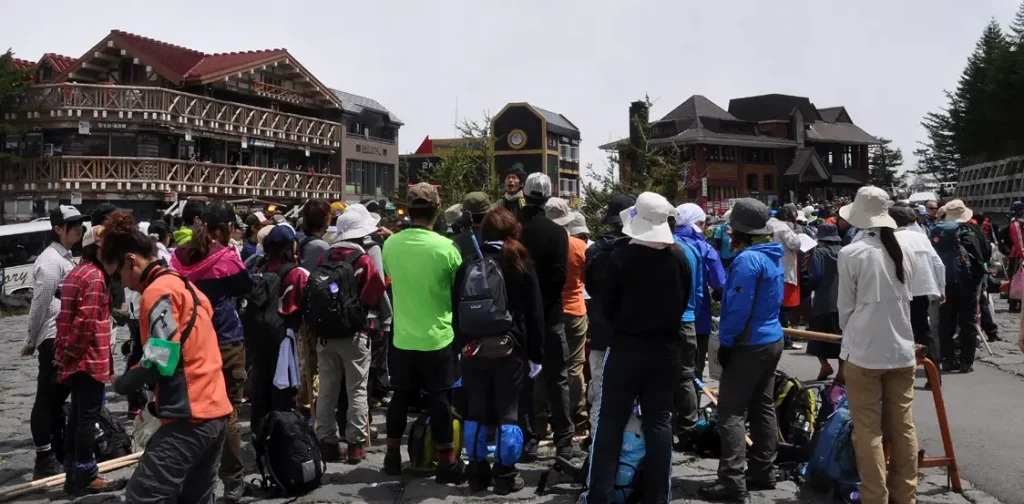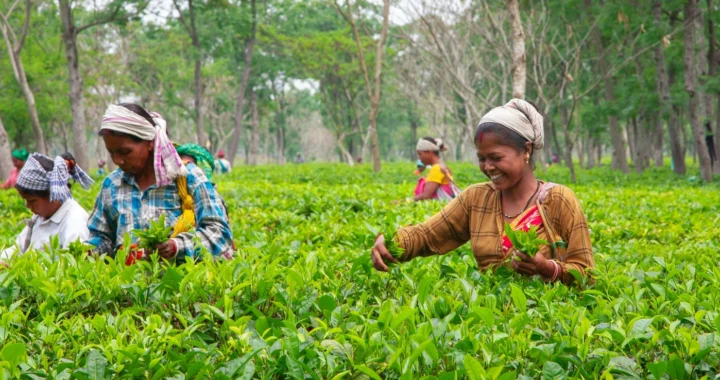Halting Overtourism in Mount Fuji

Photo: Caribb on Flickr
The tourism sector can drive economic growth in a region. With an influx of tourists, local businesses can touch a whole new market. However, the rapid growth of the sector, especially after the COVID-19 pandemic restrictions, could pose socio-economic and environmental challenges due to overtourism. In Japan, Mount Fuji has created new rules to halt overtourism and preserve its sustainability.
Overtourism Challenges
Mount Fuji is a top destination for foreign visitors due to its iconic status and natural beauty. It is also a popular spot for hiking, surrounded by lakes and forests, offering a panoramic view from the summit. It is also considered a sacred mountain, deeply intertwined with traditional belief and cultural roots. In 2023, Mount Fuji was climbed by more than 220,000 people during the peak season of July to September.
Unfortunately, the large number of hikers lend to environmental and social issues. Tourists frequently abandon significant amounts of litter, from plastics to clothing, which can harm the volcanic ash slopes. The sheer volume of international visitors, coupled with unprepared hikers or reckless climbers, also heightens the risk of accidents and strains emergency facilities.
Moreover, overcrowding at popular photo spots may create inconveniences in the daily lives of locals.
New Regulation at Mount Fuji
To prepare for more visitors and protect Mount Fuji’s environment and sanctity, the Yamanashi prefectural government has added new rules starting from July 2024. The rules apply to climbers using the Yoshida trail, which is the easiest and most popular route.
Under the new regulation, hikers will pay an extra 2000 yen (18 USD). Only 4,000 hikers are allowed per day, and they must book online beforehand. Additionally, there are rules that seek to enhance safety standards by preventing climbers from rushing to the summit without adequate rest. Climbers must opt for day or overnight hikes, and those without bookings are banned from climbing between 4 p.m. and 3 a.m.
The collected fee will be dedicated to establishing vital services, including emergency shelters along the trail in the event of volcanic eruptions and other emergencies. Additionally, climbers have the option to contribute an extra 1,000 yen (9 USD) as a donation toward the conservation efforts of Mount Fuji.
Environmental, Social, and Economic Balance
The new rules at Mount Fuji primarily aim to safeguard the mountain’s ecological balance and sustainability for generations to come by addressing overtourism. In Bali, for instance, overtourism has led to water scarcity, increased traffic congestion, waste accumulation, land use change, and extremely high living cost for locals.
In general, it is crucial to address the environmental and socio-economic impacts of an expanding tourism sector. Therefore, policies and enforcement measures that prioritize ecological and cultural preservation as well as the wellbeing of local communities must be implemented. This ensures that heavily visited destinations continue to generate sustainable economic turnover that benefit people and the planet.

Join Green Network Asia – An Ecosystem of Shared Value for Sustainable Development.
Learn, share, network, and get involved in our movement to create positive impact for people and the planet through our public education and multi-stakeholder advocacy on sustainability-related issues and sustainable development.
Become a Member Now

 How Critical Minerals Can Power a Just Energy Transition in the Global South
How Critical Minerals Can Power a Just Energy Transition in the Global South  The Rise of Local Permaculture Farming in India
The Rise of Local Permaculture Farming in India  Turning Seafood Waste into Opportunity for a Sustainable Blue Economy
Turning Seafood Waste into Opportunity for a Sustainable Blue Economy  Integrating Sustainability in Indonesia’s Gastrodiplomacy Efforts
Integrating Sustainability in Indonesia’s Gastrodiplomacy Efforts  Maintaining Healthy Skepticism on Corporate Climate Claims
Maintaining Healthy Skepticism on Corporate Climate Claims  Not Just Leading, But Transforming: How Women Are Reshaping Climate Justice in Asia
Not Just Leading, But Transforming: How Women Are Reshaping Climate Justice in Asia